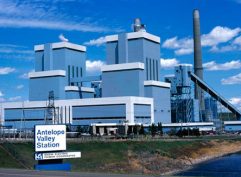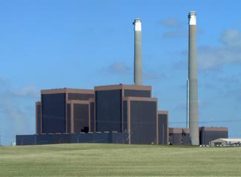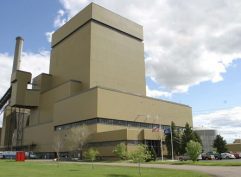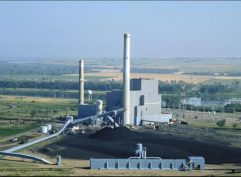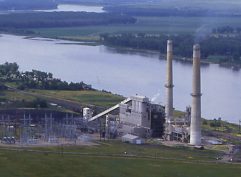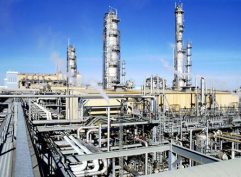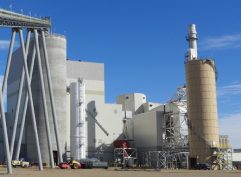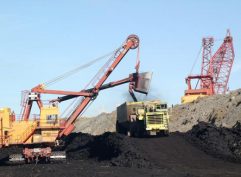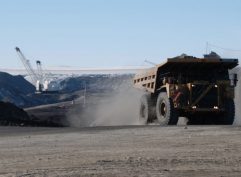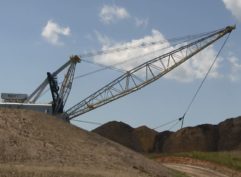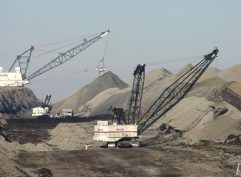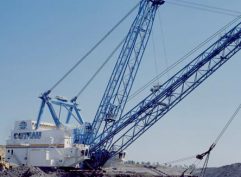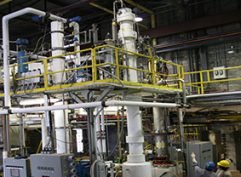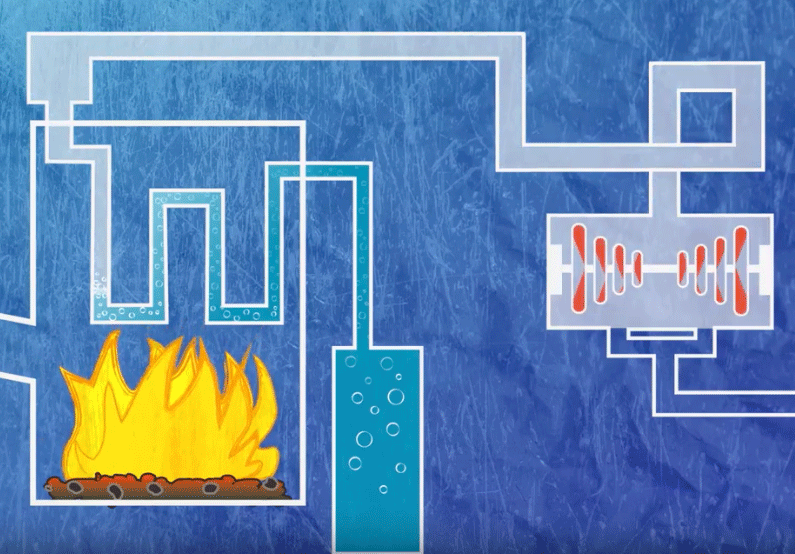A rare opportunity: ND is a new frontier in vital rare earth element research
Lignite contains high concentrations of rare earth elements – ingredients that are essential to bringing most of today’s modern technology to life. Each coal seam could produce the key components needed to manufacture smartphones, wind turbines, electric vehicles and computer hard drives, among other things.
Dr. Steve Benson, president of Microbeam Technologies (MTI) in Grand Forks, N.D., and Dr. Dan Laudal, major projects manager with the Institute for Energy Studies at the University of North Dakota, are leading research to find economical methods to extract rare earth elements from lignite.

Dr. Dan Laudal, major projects manager with the UND Institute for Energy Studies, and Dr. Steve Benson, president of Microbeam Technologies, show core samples they are studying as part of a project to extract rare earth elements from North Dakota lignite.
“Rare earth elements are basically thought of as a vitamin for materials development,” Benson said. “They’re used in multiple applications that are essential to our everyday life and there are challenges associated with the resources that are available.”
Benson said the United States imports 100 percent of the rare earth elements it needs. China controls 85 percent of the world’s mining, as well as the entire value chain to refine and process the elements. Benson said North Dakota lignite has an opportunity to reduce the country’s dependence on importing the elements, which have become vital in many military applications.
“This is really an issue of national security,” Benson said.
Lignite coal can produce all 16 rare earth elements, including europium, dysprosium, erbium, terbium, neodymium, holmium, scandium, lutetium and yttrium, among others. Research has shown that most of the elements accumulate in top and bottom of the coal seam.
“Certain parts of the lignite coal have some of the highest levels of rare earth elements we’ve seen in the United States,” Benson said.
Energy experts
UND’s Institute for Energy Studies is leading the project in collaboration with MTI, Barr Engineering, Pacific Northwest National Laboratory and MLJ Consulting. Industry partners, including Minnkota Power Cooperative, have also stepped up to sponsor the research.
Benson and Laudal bring a tremendous amount of knowledge specific to the project. Benson has 40 years of energy research experience, including projects in the 1980s identifying rare earth elements in lignite. Laudal has been completing energy research for the last decade, and recently earned his Ph.D. focusing on rare earth elements.
Through Phase 1 of the project, high percentages of the elements were demonstrated in lignite and extracted in a usable form using laboratory beakers. In August, the U.S. Department of Energy (DOE) provided $2.75 million to UND for the second phase, which will scale up extraction to 55-gallon drum tanks. It is one of four projects in the nation to receive federal funding for rare earth element recovery from coal and coal-related byproducts.
The research process includes continuously applying a solvent to extract and concentrate the rare earth elements. A detailed economic analysis is also a significant focus. If successful, Benson and Laudal believe the next step is a pilot project, potentially at Valley City State University’s new steam plant.
While there are still several steps before large-scale commercial application, Laudal believes there is great potential in North Dakota.
“Our resource assessments, based on the concentrations that we’ve found in certain seams and how much lignite coal we have here in North Dakota, show that we can make a significant dent if not completely offset all foreign imports,” Laudal said.
Analyzing coal
The Minnkota-operated Milton R. Young Station may prove to be a valuable resource because both generating units are equipped with full-stream elemental coal analyzers, which provide real-time ash composition, moisture and ash content for all coal delivered into the plant.
The long-term vision would be to use the analyzers to separate the coal with high rare earth element content and divert it to a processing unit for extraction. Following the process, the coal could then be delivered back into the plant and used for electricity generation.
“It would actually result in a better quality coal than what you started with,” Laudal explained. “It’s going to have lower ash content and remove a lot of the inorganic content that can cause problems in the boiler.”
The combination of rare earth element scarcity and growing demand for products like wind turbines and electric vehicles could turn lignite into an even more precious resource. Laudal said it’s a matter of optimizing the chemistry and gaining a better understanding of the economics.
“From a process standpoint, this is brand new research,” Laudal said. “Nobody has done this before.”
This story first appeared in the November-December 2017 Minnkota Messenger


